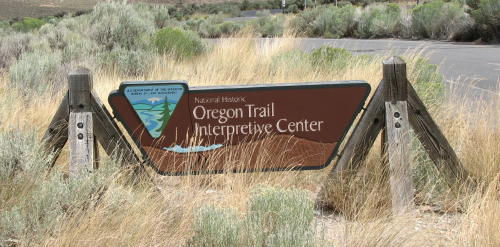
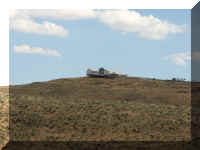
Oregon Trail Interpretive Center - 2008 . . .
on our
route to the Pacific Northwest
Updated: 11/30/08
The O T I C was very well done. The realism of the exhibits was outstanding.
The center was built on a Flagstaff Hill overlooking the prairie and mountains the people westward bound had to cross.
An outside exhibit of how the people heading west camped - circled the wagons . . .
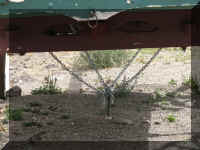
Questions about wagon trains. . . .
Are
these the original wagons used by the pioneers? No,
these are replicas of the types of wagons used from the 1840ís through
1870ís. The smaller, boat shaped wagon is an original which dates to the early
eastern
Why are the front wheels smaller than the back wheels? Large wheels roll more easily over rough roads, potholes, and rocks. Smaller wheels have a tighter turning radius. The combination of large and small wheels made a more maneuverable vehicle.
Did the wagons come up to the top of Flagstaff Hill? No, the trail passed by the base of present day Flagstaff Hill. Because of the difficulties and strain on animals of climbing and descending steep grades, wagon travelers avoided hills as much as possible.
Did they circle the wagons when they camped? Large wagon trains formed corrals by circling their wagons, where animals could be herded if needed. Small wagon trains generally did not form circles.
What
season of the year did they pass by here? The
Did they use Dutch ovens for cooking things beside stew? Dutch ovens were useful for frying, baking, boiling, and stewing a variety of foods including pies, cakes, bread, beans, soups, and meats.
Did
the land look the same to the pioneers as it does today when the wagons passed
Flagstaff Hill? Terrain and vegetation is essentially the same today as in
the mid 19th century. The developed farmlands and urban areas of
For some reason, Mary Lou likes to make photographs of Fred making photographs.
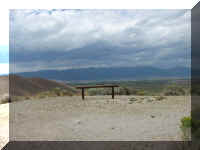
Another exhibit of a wagon was on the prairie below. A 2.5 mile loop trail included this site.
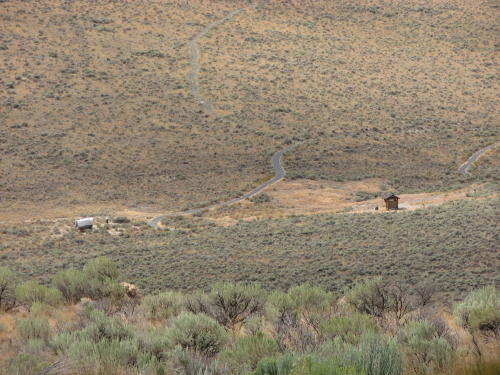
As the settlers came over a hill, this is their first view with the Blue Mountains off in the distance.
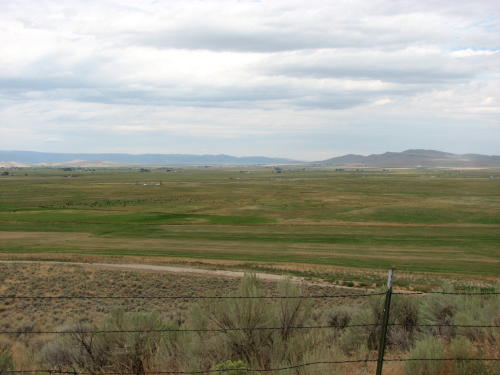
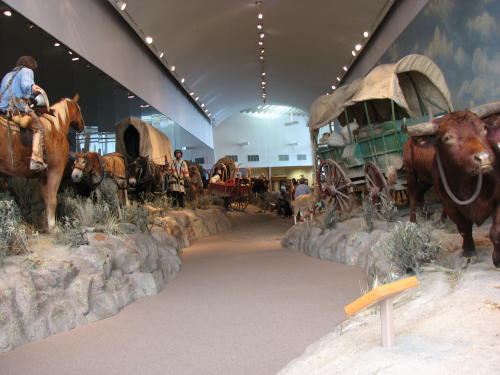
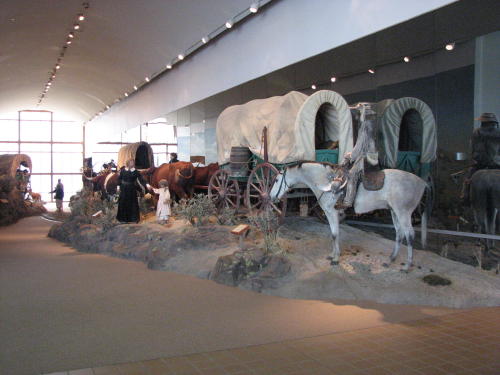
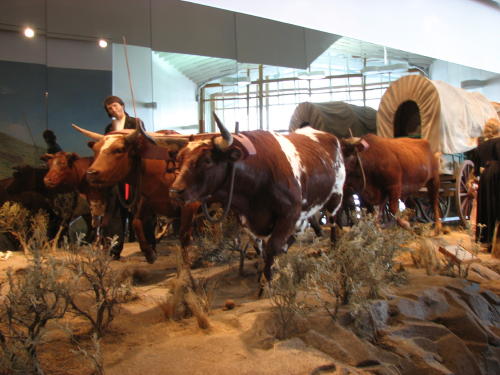
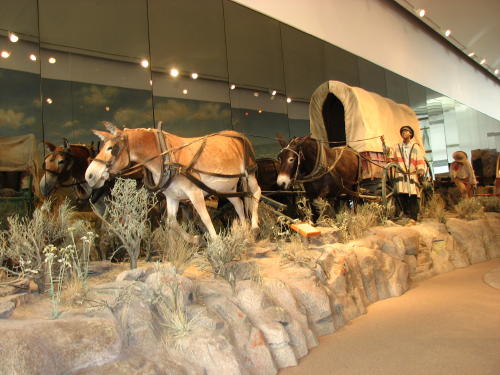
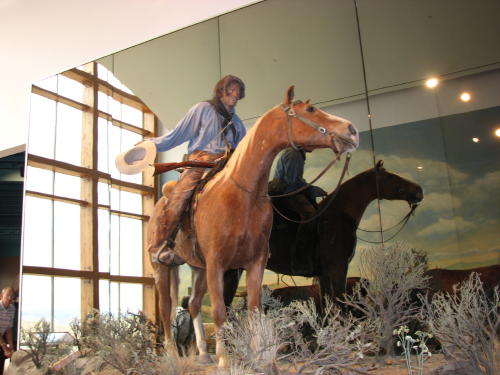
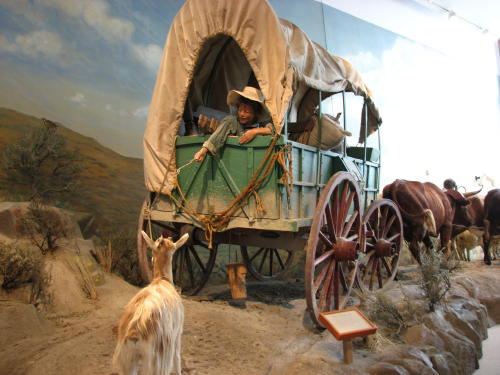
Children: The Little Adults
Get up at 4 a.m. Help fetch water, cook, clean up, and
pack.
Then walk for 10 to 20 miles, pick flowers, take a swim,
and
have a mock battle with buffalo chips.
Schoolbooks and baths are scarce.
Go to sleep. Do it
all over again 180 times.
Thousands of children spent their days like this on the Oregon Trail.
A grease bucket . . . A fly on the cow . . . The original settlers . . . Livestock traveled also . . .
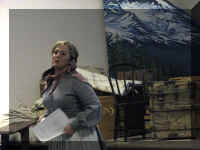
There was a special exhibit on the clothing of the times. Starting with the middle class clothing in the East at the time of the migration.
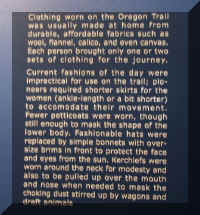
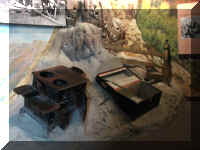
The exhibits covered all aspect of the settlers travels on the Oregon Trail.
In this exhibit, the interiors of each wagon was illuminated during various subjects on audio tape.
Several exhibits included a video screen surrounded by a set.
A very attractive bench . . .
The Center has a 4.2 mile trail system that leads visitors to a series of viewpoints and historic sites. For those with limit time or physically challenged, the short Ruts Access Trail (180 feet) is entered from the traffic pullout on Highway 86. It offers a quick and easy way to view the ruts.
This Oregon Trail Memorial was constructed to commemorate the centennial anniversary.
We were there for 3 hours, about 45 minutes of that was at the special presentation.
Admission is $5, over 61 is $3.50, special passes are honored. The facility is open year around.
If you are planning to hike the trail, allow an additional two hours. Remember, it can be very hot in this area, you'll need to dress appropriately and carry your own water. No water is available on the trail.
GO BACK TO > > > Pacific Northwest - 2008